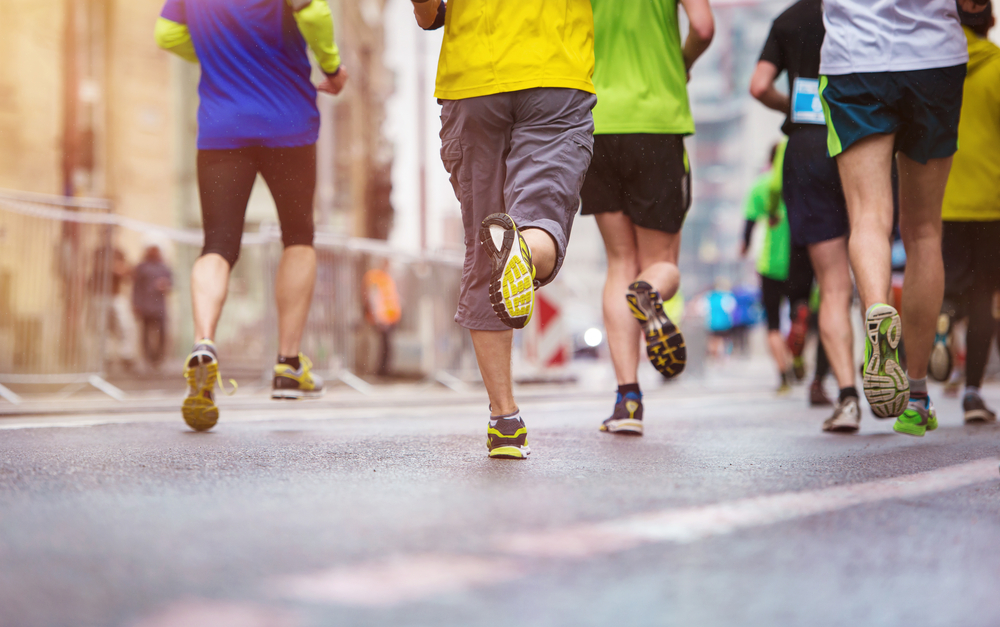Those Who Run Together, Stay Together

Sara Thompson, MSc in Exercise Science
Most of us can relate to the main barriers of exercise: lack of time, lack of motivation, fear, and lack of exercise facilities (Korkiakangas et al., 2009). However, another common barrier is lack of social support – finding someone to work out with is half the battle! Through my travels this summer to various research labs, I noticed how closely social interaction and physical activity are tied together.
During our visit to the Norwegian Institute of Science and Technology (see Generation 100: The biggest clinical HIIT trial in the world!), Fiona Callender and I noted how following a workout, participants in the exercise intervention group stayed after their workout to have a coffee and chat with the other participants. They enjoy not only the exercise itself, but also the friendships and camaraderie that come with it. Similarly, participants from Dr. Krustrup’s lab at the University of Copenhagen reportedly chose to continue playing soccer even after the study was done (see Soccer for all: A new definition for “Soccer (grand)mom”). The relationships that were formed during the study pushed them to continue to exercise together. In contrast, the participants who were randomized to the running intervention stopped exercising following the completion of the study. Finally, we witnessed the building of lifelong friendships at the World Masters Track and Field Championship (see 80 is the new 30: Aging athletes and a trip to the World Masters Track and Field Championships) – the social aspect of the competition was a huge part of it! There’s no denying it – exercise can help build strong networks of social support and friendship.
Related Video: Meet A Master Sprinter Tunde Ridley
But how does social interaction affect exercise? Davis and colleagues from the Institute of Cognitive and Evolutionary Anthropology at the University of Oxford aimed to find out (Davis et al., 2015). In this study, 68 participants between the ages of 18 and 49 years participated in a within-subjects design. Participants performed a short warm-up, which consisted of standard body-weight exercises in three different conditions: a) solo warm-up, b) non-synchronous warm-up, and c) synchronous warm-up. In conditions b and c, participants performed the warm-up with a partner while listening to a metronome beat via headphones. The beat dictated when and how fast to perform each exercise. During the synchronous condition, participants performed each exercise at the exact same time, whereas during the non-synchronous condition, participants performed exercises beside each other but at different times. Following the warm-up, each participant performed a standardized performance test – the England Anaerobic Endurance Test (EAET). This 6-minute endurance test consisted of 5 sets of high-intensity running interspersed with a short resting period. Performance was based on the time it took each individual to complete the running test when all 5 bouts were added together. The researchers found that when individuals warmed up with another participant prior to the anaerobic test (synchronous warm-up), they performed better compared to when they warmed-up up in non-synchronous or solo fashion.
Related Article: Become A Runner at Any Age
These researchers hypothesize that when individuals exercise together, a phenomenon known as “social placebo” comes into play, whereby individuals are blunted to the physical and psychological pain associated with high-intensity exercise. Simply put, participants don’t feel the pain of working out as much if they are working out with friends or teammates, allowing them to push harder during exercise. This is consistent with findings by Dr. Krustrup (see Soccer for all: A new definition for “Soccer (grand)mom”) who noted that individuals who were playing soccer didn’t feel as though they were working as hard as those individuals who were running, even though they were working at an identical effort. These findings are significant as individuals who don’t feel like they’re working as hard are more likely to continue to exercise. This is best exemplified by Williams and colleagues who observed that participants who reported more positive affective responses to moderate-intensity exercise had greater physical activity participation 6- and 12-months post-exercise (Williams et al., 2008).
Sport and physical activity brings people together, increasing social engagement. However, it also works the other way around. Working out in groups makes exercise more enjoyable, and decreases negative feelings associated with exercise. Social interaction improves exercise – making people work harder and enjoy it more. And if people are enjoying exercise they’re more likely to stick to it!
Related Article: Trigger Motion: Running Terms For Those New to the Game
Tips:
Look for places in your neighborhood that have group exercise classes, running groups, or sports teams.
If you don’t want to go to a gym, no problem! Grab a friend and go for a run, jog, or do interval walking together. Working out with a friend will be more enjoyable and help you stick with it.
If you don’t know where to start contact FTG and we can help you find programs or facilities in your area.
Sources:
Davis, R.; Taylor, J.; Cohen, E. Social Bonds and Exercise: Evidence for a Reciprocal Relationship. PloS one. 2015, 10(8), e0136705.
Korkiakangas, E.; Alahuhta, M.; Laitinen, J. Barriers to regular exercise among adults at high risk or diagnosed with type 2 diabetes: A systematic review. Health Promot. Int. 2009, 24, 416–427.
Williams, D. M., Dunsiger, S., Ciccolo, J. T., Lewis, B. a, Albrecht, A. E., & Marcus, B. H. Acute affective response to a moderate-intensity exercise stimulus predicts physical activity participation 6 and 12 months later. Psychology of Sport and Exercise. 2008, 9(3), 231-245.















